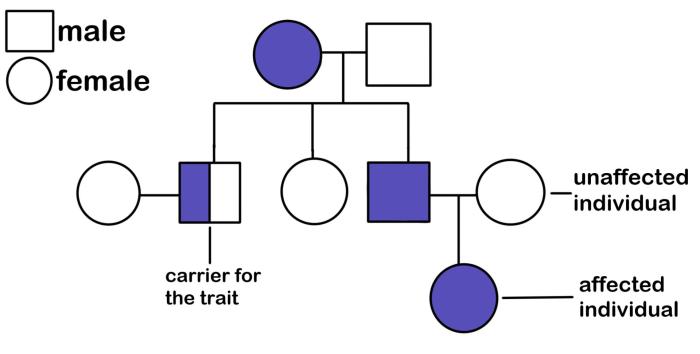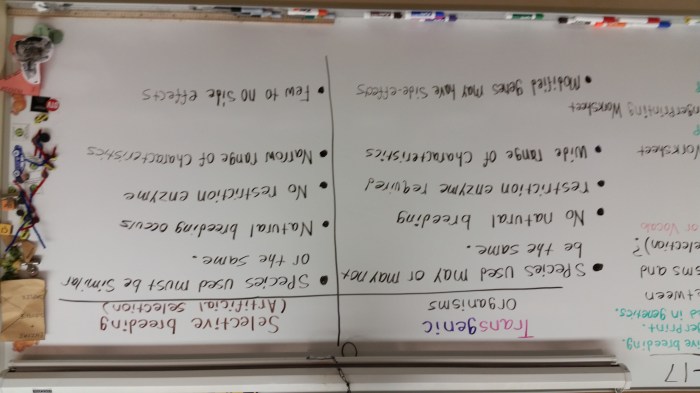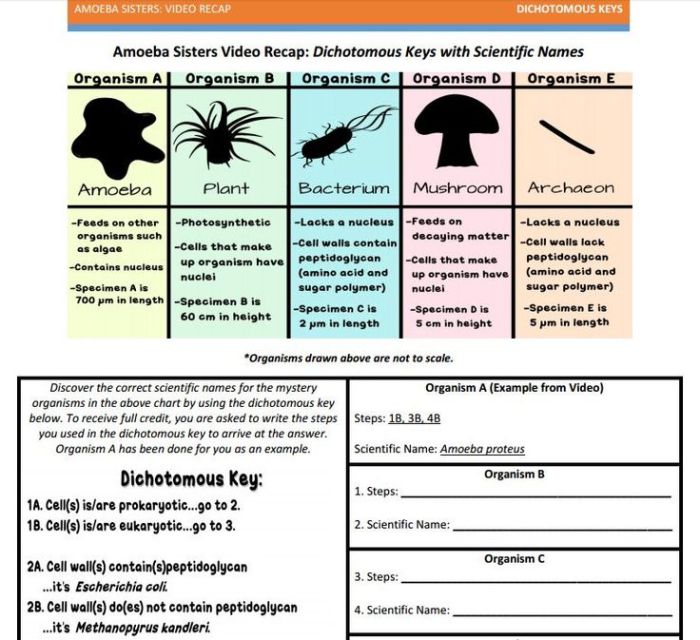Embark on an enlightening journey with the Amoeba Sisters Pedigrees Answer Key, where the intricate world of genetic inheritance unfolds. This comprehensive guide unveils the secrets of pedigrees, empowering you to decipher the patterns that shape our genetic heritage.
Delve into the depths of pedigree analysis, mastering the art of interpreting symbols, navigating pedigree types, and deciphering inheritance patterns. Explore the practical applications of pedigrees in genetic counseling, gaining invaluable insights into inherited disorders.
Amoeba Sisters Pedigrees: Introduction

Pedigrees are diagrams that represent the inheritance of traits within a family. They are used in genetic analysis to track the transmission of genetic information from one generation to the next. The Amoeba Sisters, a popular educational YouTube channel, have created a series of videos on pedigrees that provide a clear and engaging introduction to the subject.
The Amoeba Sisters’ approach to teaching pedigrees emphasizes visual representation and practical examples. They use colorful diagrams and animations to illustrate the concepts and principles of pedigree analysis. They also provide step-by-step instructions on how to construct and interpret pedigrees, making the subject accessible to students of all levels.
Understanding Pedigree Symbols, Amoeba sisters pedigrees answer key
| Symbol | Meaning |
|---|---|
| ☐ | Male |
| ☐ | Female |
| ● | Affected individual |
| ○ | Unaffected individual |
| ☐/○ | Carrier (heterozygous) |
| □ or ○ (with a line through it) | Deceased individual |
It is important to recognize and interpret these symbols accurately in order to correctly understand the information contained in a pedigree.
Types of Pedigrees
There are different types of pedigrees, each with its own advantages and limitations:
- Vertical Pedigrees:These are the most common type of pedigree. They are drawn vertically, with the oldest generation at the top and the youngest generation at the bottom.
- Horizontal Pedigrees:These are drawn horizontally, with the oldest generation on the left and the youngest generation on the right.
- Circular Pedigrees:These are drawn in a circular pattern, with the oldest generation in the center and the youngest generation on the outside.
Interpreting Pedigree Patterns
Common patterns observed in pedigrees include:
- Dominant Traits:These traits are expressed in individuals who have at least one copy of the dominant allele. In a pedigree, dominant traits are typically represented by filled-in symbols (●).
- Recessive Traits:These traits are only expressed in individuals who have two copies of the recessive allele. In a pedigree, recessive traits are typically represented by open symbols (○).
- Sex-Linked Traits:These traits are located on the X or Y chromosomes. In a pedigree, sex-linked traits are typically represented by symbols that are colored differently for males and females.
Pedigree patterns can help geneticists identify the mode of inheritance of a particular trait and estimate the risk of an individual developing a genetic disorder.
Pedigrees in Genetic Counseling
Pedigrees play an important role in genetic counseling. They are used to:
- Identify individuals at risk for inherited disorders
- Estimate the probability of a child inheriting a genetic disorder
- Provide information about the availability of genetic testing
- Help families make informed decisions about genetic testing and reproductive options
Common Misconceptions about Pedigrees
There are some common misconceptions about pedigrees that can lead to misinterpretation:
- Pedigrees are only useful for studying rare genetic disorders:Pedigrees can be used to study both rare and common genetic disorders.
- Pedigrees are always accurate:Pedigrees are only as accurate as the information that is available. It is important to verify the accuracy of a pedigree before making any conclusions.
- Pedigrees can be used to predict the future:Pedigrees can only provide information about the past and present. They cannot be used to predict the future.
Essential FAQs: Amoeba Sisters Pedigrees Answer Key
What are pedigrees used for?
Pedigrees are used to trace the inheritance of traits and genetic disorders within families, providing valuable information for genetic counseling and medical diagnosis.
How do I interpret pedigree symbols?
Refer to the standard table of pedigree symbols to understand their meanings. Each symbol represents a specific individual or relationship within the pedigree.
What are the different types of pedigrees?
Pedigrees can be vertical, horizontal, or circular, each with its own advantages and limitations for representing family relationships and inheritance patterns.
How can pedigrees help in genetic counseling?
Pedigrees provide a visual representation of family history, enabling genetic counselors to identify individuals at risk for inherited disorders and provide appropriate guidance.

